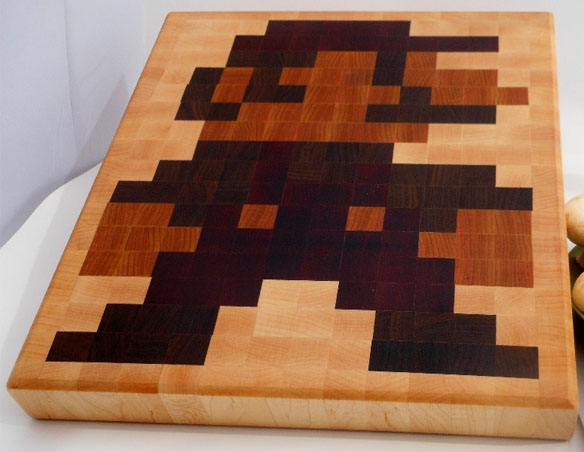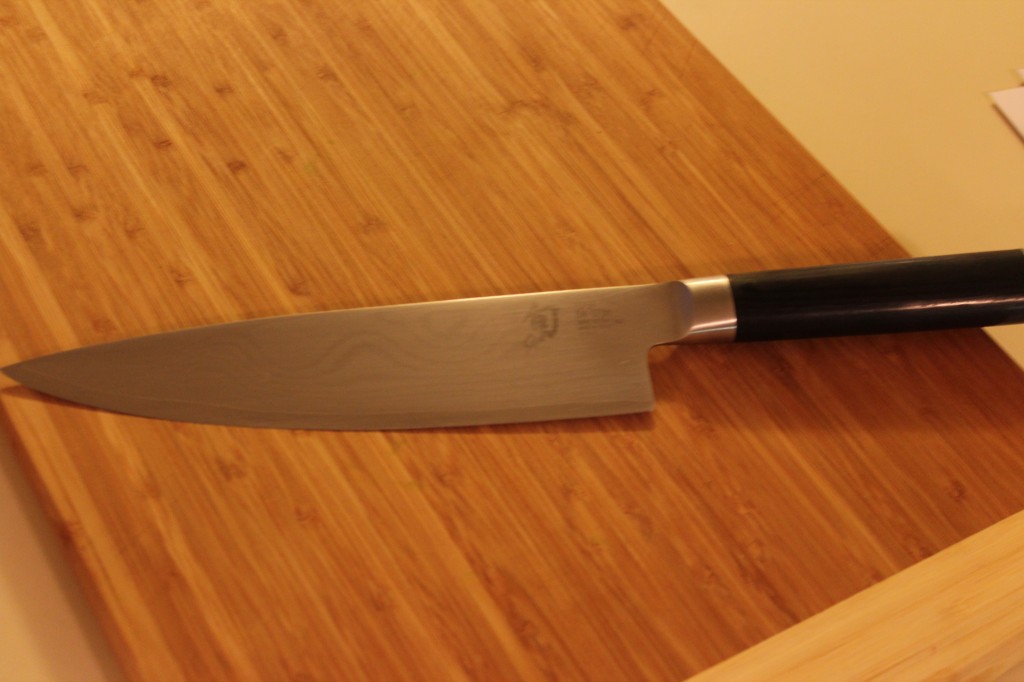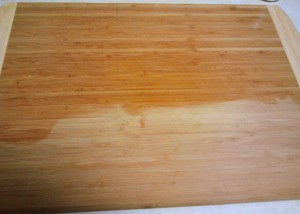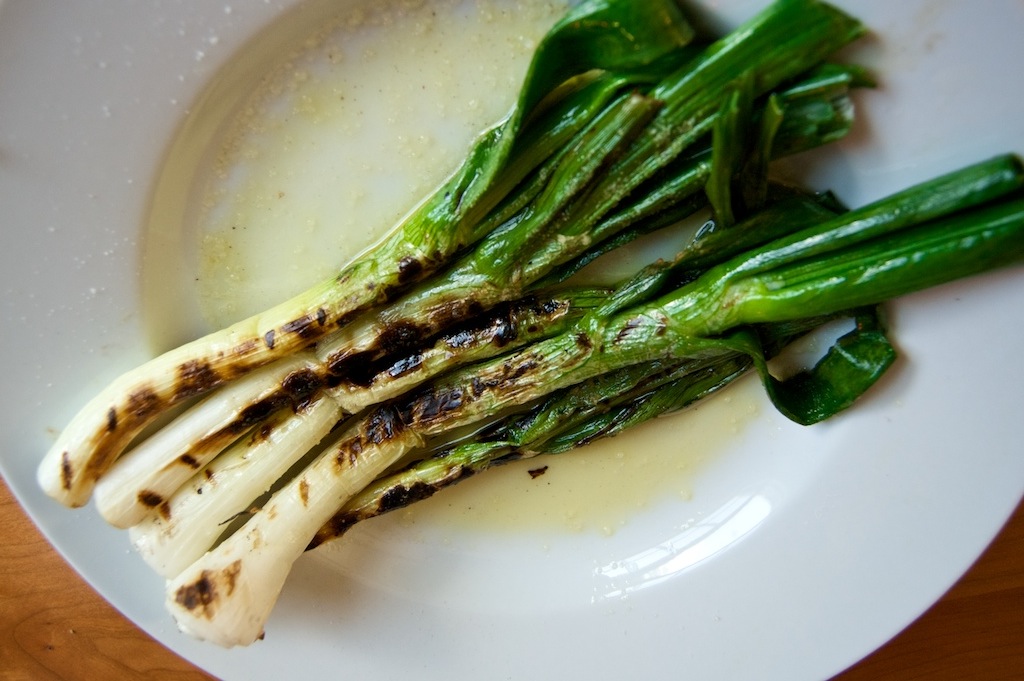Archive for January, 2013
If you take cooking seriously, you know that there are lots of tertiary skills which go along with cooking which really have nothing to do with applying heat and seasoning to food. This will be – hopefully – the start of a recurring series which examines some of those aspects of the culinary world. What can you expect from this series of posts? Things along the lines of choosing a knife, sharpening a knife, roasting and grinding spices, seasoning a cast iron pan, choosing the right pan, things along those lines.
In the inaugural post in this series, we are going to examine…. cutting boards!
Wait…don’t go! I see you closing your laptop! Look, I know cutting boards are not a sexy topic, certainly not as fun as looking at knives. But really, what the hell is the point of buying a $400 kitchen knife if you’re going to destroy it within a week by using a glass cutting board? As with anything, the fundamentals may not be exciting, but without them you’re really going to struggle down the line. So read on!
Choosing Your Board
There are TONS of choices when it comes to cutting boards. You can go with wood, bamboo, plastic, glass, stone, steel, or rubber. Well, technically you can go with any of those choices. In reality, you can pick between wood, bamboo or plastic/rubber. “But Loren”, you cry, “my marble cutting board looks so snazzy! And it’s really easy to clean, I can even throw it in the dishwasher!” POPPYCOCK, I retort! Fine, I guess you can keep using it if you want, but promise me you won’t ever spend more than $10 on a knife, because you will be throwing money away. A glass or marble or steel or stone cutting board is pretty much the worst possible thing you can do to your kitchen knives. Any time your cutting board is made of a material which is very hard, it will very rapidly dull your knife, and might even chip the blade if you’re not careful. These materials are just not meant to be used as cutting boards, despite how easily they clean.  If you already have one, you don’t have to get rid of it, just use it as a cheeseboard or serving platter or something.

The best part about butcher blocks? They are ideal for recreating the 8 bit video game characters of your childhood.
Having settled that, let’s look at wood or bamboo cutting boards. First, the upsides: they look nice, and they are very easy on your knives. The downsides? Well, you can’t put them in the dishwasher, the bigger butcher blocks can be quite heavy, and they require a little maintenance on your part.
There is also a difference between thinner, flat grain boards and the big, thick butcher blocks which are end grain boards. While the ends grain boards are a little less convenient since they are more heavy and ungainly, they are much, much better for your knives. Basically, because the grains are running vertically, your knife essentially pushes the grain apart rather than crushing it or cutting it. When you take the knife away, the grains actually close back up so these boards are more resistant to showing cuts and nicks as well.
As for plastic boards: they are cheap, they clean up easily, they can go in the dishwasher, and they’re light. Some of them even have rubber feet or bottoms built in to prevent slipping on the counter. The problem? They just don’t lend the same kind of gravitas to your kitchen or your cooking. If you’re a serious cook, it makes sense to have a serious board, doesn’t it?
Really the best thing to do is have several. I have one wooden butcher block, one large bamboo board, and a few smaller plastic boards. This provides me with a little flexibility. If I’m pressed for time, I can use a board that can be put in the dish washer. If I’m prepping multiple components of a good meal, I can do all the veggies on a wood board and switch to plastic for the meat to prevent cross contamination.
 Caring for your Cutting Board
Assuming you haven’t already tossed aside my concerns about the relative lack of gravitas and decided to go exclusively with plastic boards, you are going to need to know how to clean maintain your wood or bamboo cutting board.The first rule of cleaning wood boards is: do not submerge them in water. The second rule of cleaning wood cutting boards is: DO NOT SUBMERGE THEM IN WATER. Being a piece of dried wood, your board’s natural reaction to being submerged in water for any length of time will be to absorb that water, which is going to cause you all kinds of problems, namely the wood will bulge, warp and crack. Once these things start happening, there is really no reversing them, you can only hope to keep the problem from getting worse. So, to clean your cutting board, just use a damp cloth and mild soap. This isn’t enough to seriously disinfect, but that’s OK because you already have a plastic board for cutting your meat, right? No? Jeez… alright. If you absolutely must use your wooden board for all tasks, including cutting meat, you can use a mild bleach or vinegar solution to disinfect the wood. Don’t make this a habit though.
Finally, you’ll need to oil your board every month or two to keep it up to shape. There are a good amount of products out there which are specifically designed for cutting board maintenance, some including protective waxes, but you really don’t need to go that route. Just a simple bottle of mineral oil will do the trick. Don’t try to use a vegetable oil of any kind, as they will turn rancid. Â Apply a
generous layer to one side of your board and wipe down with a paper towel or clean rag to make sure you have even coverage, then let the board sit for a few hours. Come back and get the other side, along with the vertical and horizontal faces and let sit for another few hours. If you have a big, thick board or block, you may need to repeat this process several times. Afterward, if there is still an oily film on the board, give it a quick wash.
Mise en place: the French phrase literally meaning “everything in place.”  If you’ve watched Top Chef, Chopped, Iron Chef, or any in the litany of cooking shows out there you’ve heard those words.  Its kitchen and chef talk for what you have when you’ve prepared and arranged all your ingredients for whatever it is you’re going to cook.
A bit back, at a work happy hour, I was talking with some co-workers about cooking and one mentioned that his wife has started “setting everything out before cooking like on the shows.” Â When I mentioned I do the same, I got some weird looks and a couple “whys.” Â I had to think for a second on the why.
I haven’t always done this, but over time just slowly started.  A few months back, I was able to pick-up, on the cheap, some nested bowls, ranging from a couple of teaspoons to huge, and really got into the preparation.  Over time, I just realized that the setup actually makes the cooking process quicker and easier.  But, most importantly, mise en place forces me to read the recipe through, think about what I’m going to do, and check a recipe for any gaps.
The last point can be critical for new recipes.  A few weeks, I tried a recipe from Pinetrest. A relatively simple pasta sauce recipe that looked simple to take on.  The problem? The recipe didn’t list retained pasta water in the ingredient list or mention until after I would have discarded it.  I was saved by the mise en place; by looking over the recipe and preparing I was ready for the curve ball thrown at me.
I may not need to worry about my mise en place when I’m making a dish I know and love well, but, when exploring the new or making the complex having everything, in its place is a winning strategy.
As almost any of my  local friends could tell you, I am hopelessly hooked on this recipe. I originally found it in a Splendid Table Summer Grilling handbook I got for joining Minnesota Public Radio (charitable brag), and I think I may have made it every single time I’ve grilled in the last 5 months. I’m not sure I’ve ever found another recipe which has such an insanely out of balance ratio of time, effort and money input for each unit of tastiness returned. This whole thing takes about 5 minutes to prep, it cooks on the same grill and at the same time as whatever else you might be grilling, and the end result is just fantastic. The only complaint I have with this recipe is that it may upstage whatever meat you’re grilling with it!
First prep the scallions by rinsing and drying all of them, then cutting off the roots at the bottom as well as the top 2 inches from the green end.  The asparagus  needs to be rinsed and trimmed as well. There’s a nifty trick for this, which ensures that you will always remove all the tough, fibrous part of the stem. Grasp the cut end of the asparagus in one hand, and then hold 2-3 inches up the stalk with your other. Bend the stalk until it snaps, and throw away the short end. There’s no consistent point that asparagus stems turn from tough to tender, and this method will allow each stalk to break naturally at that point.
Place all of the onions and asparagus on a platter or jellyroll pan, then drizzle on 2 tbsp or so of olive oil. The exact amount of each is not that important, but I usually do 2 bunches of scallions and 1 of asparagus. Also, if you’re able to find the smaller asparagus stalks, go for those. Asparagus, being much denser then scallions, takes significantly longer to cook. The small, thin ones seem to cook at roughly the same time, so those are ideal. Toss the veggies with the oil, and whatever seasoning you want. You could use just salt and pepper, or change it up for your tastes. I usually use Cavender’s Greek seasoning for this, it seems to work pretty well.
Don’t go nuts with seasoning the veggies, because after they grill you’re going to top with a balsamic vinaigrette. It doesn’t need to be perfectly executed, just mix balsamic, olive oil, Dijon mustard, garlic, and an herb or two. If you need a recipe to work off of, we’ve previously covered the America’s Test Kitchen vinaigrette recipe here, just make sure you don’t use the full amount. 1/2 cup or so of vinaigrette will be plenty.
Grill the veggies for 5 minutes or so, depending on how hot you have the coals. If they start to burn just move to a cooler part of the grill. When everything has a bit of color and has gone slightly limp, it should be ready. Toss the veggies with the balsamic mixture and serve immediately. You can top with some shaved Parmesan if you like, but its damn good as it is.



